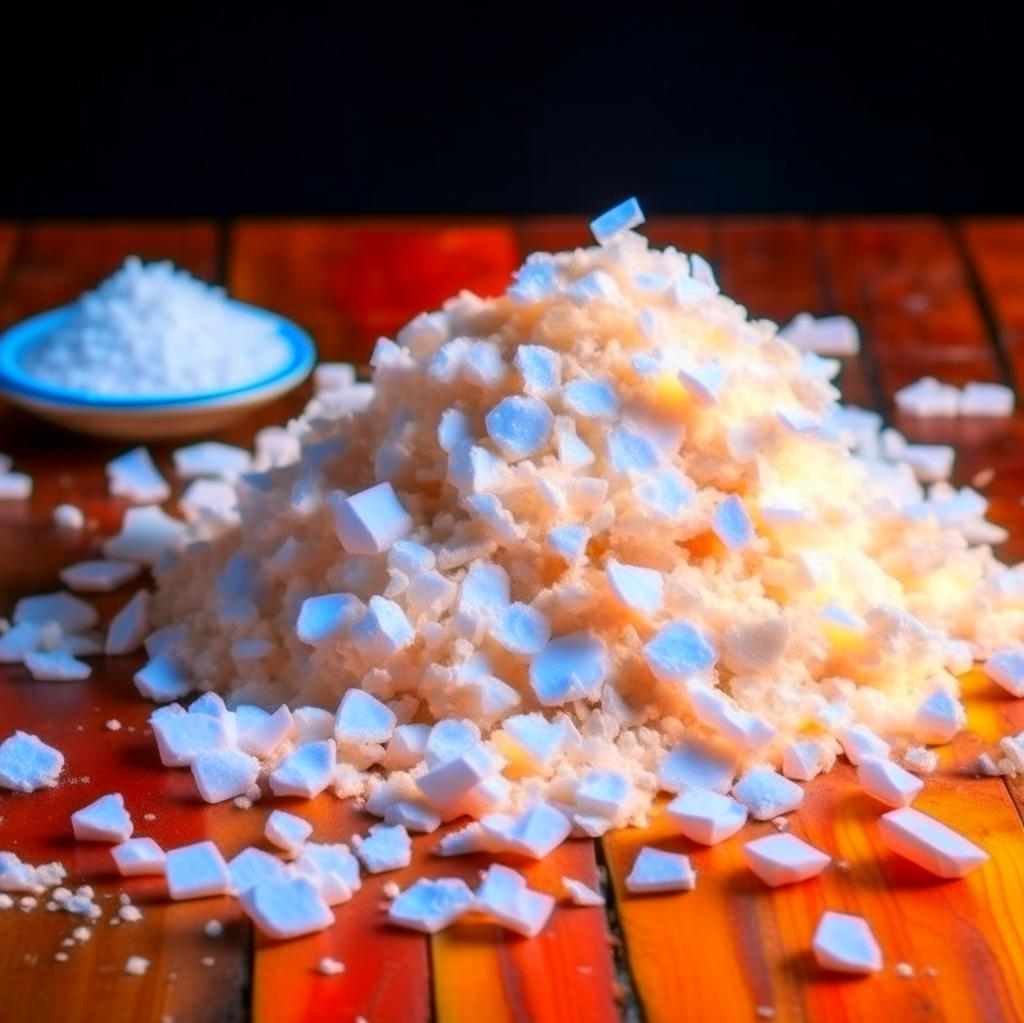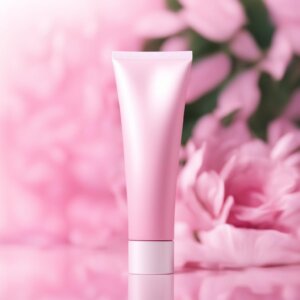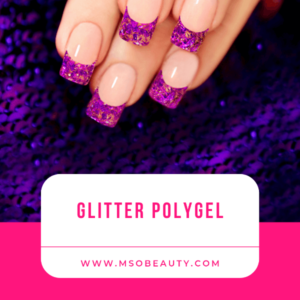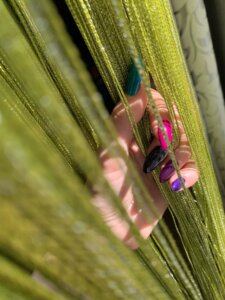One of the popular uses for caustic potash is in cuticle remover solutions to soften and remove dead skin around the nails. While it’s effective, some folks are worried about its safety and potential risks. After all, caustic potash is a powerful chemical.
In this blog post, we’ll take a closer look at the properties, benefits, and applications of caustic potash in cuticle removers. Plus, we’ll discuss some concerns you may want to keep in mind if you’re thinking about using this ingredient.

Caustic potash overview
Caustic potash, also known as potassium hydroxide (KOH), is a strong alkaline compound.
It’s a white, odorless solid that easily dissolves in water, forming a highly alkaline solution.
KOH is made by electrolyzing potassium chloride or potassium carbonate.
This powerful alkaline chemical has many uses across different industries and in everyday life.
You can find it in soaps, detergents, and cleaning agents.
Caustic potash also plays a super-impprtant role in cuticle removers.
It works by softening and dissolving the tough, dead skin around your nails.
This makes it much easier to push away and remove cuticles.
It’s like having a professional salon at home!
How does caustic potash work in a cuticle remover?
Caustic potash is like the secret weapon in cuticle removers.
It takes your nail care game to the next level.
This powerful ingredient works wonders on your cuticles.
Caustic potash softens even the most stubborn dead skin around your nails up, making it super easy to remove.
Here’s how it works:
When you apply a cuticle remover that contains caustic potash, it gets to work immediately.
Its alkaline nature helps loosen the bonds holding the cuticles in place, making them more flexible.
That means you can gently push them back or remove them altogether without any fuss.
Potassium hydroxide benefits for a clean manicure:
Using a cuticle remover with caustic potash has some serious benefits:
- It’s way more safe and easy than trying to manually cut your cuticles.
- It’s a speedy process that saves you time and effort.
- It leaves the skin surrounding your nails looking smooth and your nail beds ready for a flawless polish application.
Caustic potash safety
Caustic potash is really potent stuff.
After all, it’s a strong alkaline compound, so you need to handle it with care.
When used in the regulated amounts found in store-bought cuticle removers, caustic potash is generally safe.
Just make sure to follow the instructions and be cautious during application to avoid any potential irritation.
Plus, don’t exceed the recommended application time.
In addition to that, don’t overuse it.
Applying more product won’t give you better results, but can increase the risk of skin irritation.
To be on the safe side, it’s a good idea to do a patch test before using this kind of cuticle remover on a larger area.
Just try it on a small spot of skin to see if you have any adverse reactions or sensitivities.
And don’t forget that any chemical like caustic potash can be harmful if it gets in your eyes.
So be careful to avoid any splashes or drips.
Top cuticle remover with caustic potash
Sally Hansen cuticle remover
My favorite remover that I use once a week is Sally Hansen Cuticle Remover.
This product is really popular.
Plus, Sally Hansen is a trusted brand known for its quality and effectiveness.
This remover also uses caustic potash to soften and dissolve stubborn cuticles, making them a breeze to push away and exfoliate.
One of the best features for me is its gel-like consistency.
This means it stays right where you apply it, without any messy running.
The gel clings to the cuticles, allowing the caustic potash in the formula to work its magic, without the product leaking all over the place.
Applying the Sally Hansen Cuticle Remover is a breeze too.
The tube comes with a handy thin nozzle applicator.
This makes it super-easy to apply the remover exactly where you need it.
Just remember, follow the instructions on the package carefully and take precautions.
It works very quickly, so you only need to keep it on your cuticles for about 30 seconds.
How to use cuticle remover safely
To safely use a cuticle remover with caustic potash during a manicure, follow these steps:
1. Gather your tools and supplies:
Cuticle remover
Warm water
Towel
Cuticle pusher or orange wood stick
Cotton pads or soft cloth
Moisturizing lotion or cuticle oil
2. Take some precautionary steps:
- Read the instructions carefully to understand how to use the product and any specific warnings or precautions.
- Perform a patch test by applying a small amount of the cuticle remover on your inner wrist. Wait 24 hours to see if there are any adverse reactions.
3. Follow the proper application steps:
- Start by washing your hands with warm water and gentle soap. Dry them with a towel.
- Apply a thin layer of the cuticle remover onto the cuticles of one hand using the applicator or brush provided. Be careful to avoid spreading it excessively onto the surrounding skin.
- Wait for the recommended time mentioned on the product label. Allow the cuticle remover to work and soften the cuticles.
- Gently push back and exfoliate the softened cuticles using a cuticle pusher or orange wood stick. Remember not to apply too much pressure.
- Wipe away any excess product from your nails and surrounding skin using a cotton pad or soft cloth.
4. Provide proper aftercare:
- Rinse your hands with warm water to wash off any residue from the cuticle remover. Then, pat them dry.
- Apply a moisturizing lotion or cuticle oil to nourish and hydrate your cuticles and the surrounding skin.
- Maintain nail health by regularly moisturizing, keeping the cuticles clean, and avoiding excessive filing or cutting of the skin.
- Follow the manufacturer’s recommendations on the frequency of use to prevent any potential damage to your nails and cuticles.
Alternatives to caustic potash in cuticle remover
Most store-bought cuticle removers do contain a small amount of caustic potash.
But don’t worry, it comes in tiny, regulated quantities that are safe to use.
If you are looking for a caustic-potash-free alternative or prefer natural remedies, you can make your own cuticle remover.
For example, a popular DIY alternative is apple cider vinegar.
Just use good-quality vinegar with the “mother”.
Here’s how it works:
- Get a bowl and mix equal parts warm water and apple cider vinegar.
- Let your fingertips soak in this mixture for around 10 minutes.
- This allows the mild acidic properties of the vinegar to work their magic on your cuticles.
- After that, take a cuticle pusher or an orange wood stick and gently push back those softened cuticles.
Just a heads-up though, DIY options might not be as strong as all the commercial stuff.
So, you might need to repeat the process every week for a few weeks to see results.
Plus, you may even have to use additional tools like cuticle clippers, scissors, or a nail drill to make the area neat.
Remember, everyone’s nails are unique, so what works for others might not work for you.
Test your DIY solution on a small area first to make sure your skin agrees with it.
You can also try coconut oil or almond oil as gentle options to soften the cuticles.
Even though they don’t actually dissolve the dead skin, they help make it more manageable and easier to push away.
Can caustic potash cause skin irritation or allergies?
It’s uncommon, but some people may experience skin irritation or allergic reactions to caustic potash.
To be safe, again, it’s a good idea to do a patch test before using a cuticle remover with caustic potash.
Especially if you have sensitive skin or a history of allergies.
How should I handle and store my cuticle remover with caustic potash?
Keeping the product out of the reach of children and pets.
Store it in a cool, dry place away from direct sunlight or heat.
Plus, follow any specific storage instructions provided by the manufacturer.
Are there any precautions I should take when using cuticle removers with caustic potash?
Avoid contact with your eyes, mouth, or any open wounds.
Apply the cuticle remover only over the cuticles, avoiding the surrounding skin.
After application, wash your hands thoroughly.
If you experience any adverse reactions, stop using it and consult a healthcare professional.
How often should I use a cuticle remover?
It’s best to use a cuticle remover once a week or every two weeks.
Find a frequency that works well for your nails and cuticles.
This can also depend on your needs and the product’s instructions.
Can I use a cuticle remover if I have sensitive skin?
If you have sensitive skin, be cautious.
Look for products specifically designed for sensitive skin.
And yet again, do a patch test before applying it fully.
If you notice any signs of irritation, stop using it and consult a dermatologist.
Can I apply nail polish immediately after using a cuticle remover?
It’s always recommended to wait for a little while after using a cuticle remover before applying nail polish.
This allows the nail plate to dry, ensuring better adhesion of the polish.
Follow the instructions provided and allow enough drying time.
How can I maintain healthy cuticles between cuticle remover applications?
Keep your cuticles healthy by regularly moisturizing them with cuticle oils or creams.
After showering or bathing, gently push them back using a cuticle pusher or orange wood stick while they are soft.
Avoid picking or biting your cuticles to prevent irritation and potential infections.
To wrap up, cuticle removers can be effective tools for achieving well-groomed nails.
While many store-bought cuticle removers contain caustic potash, they are safe when used as directed.









